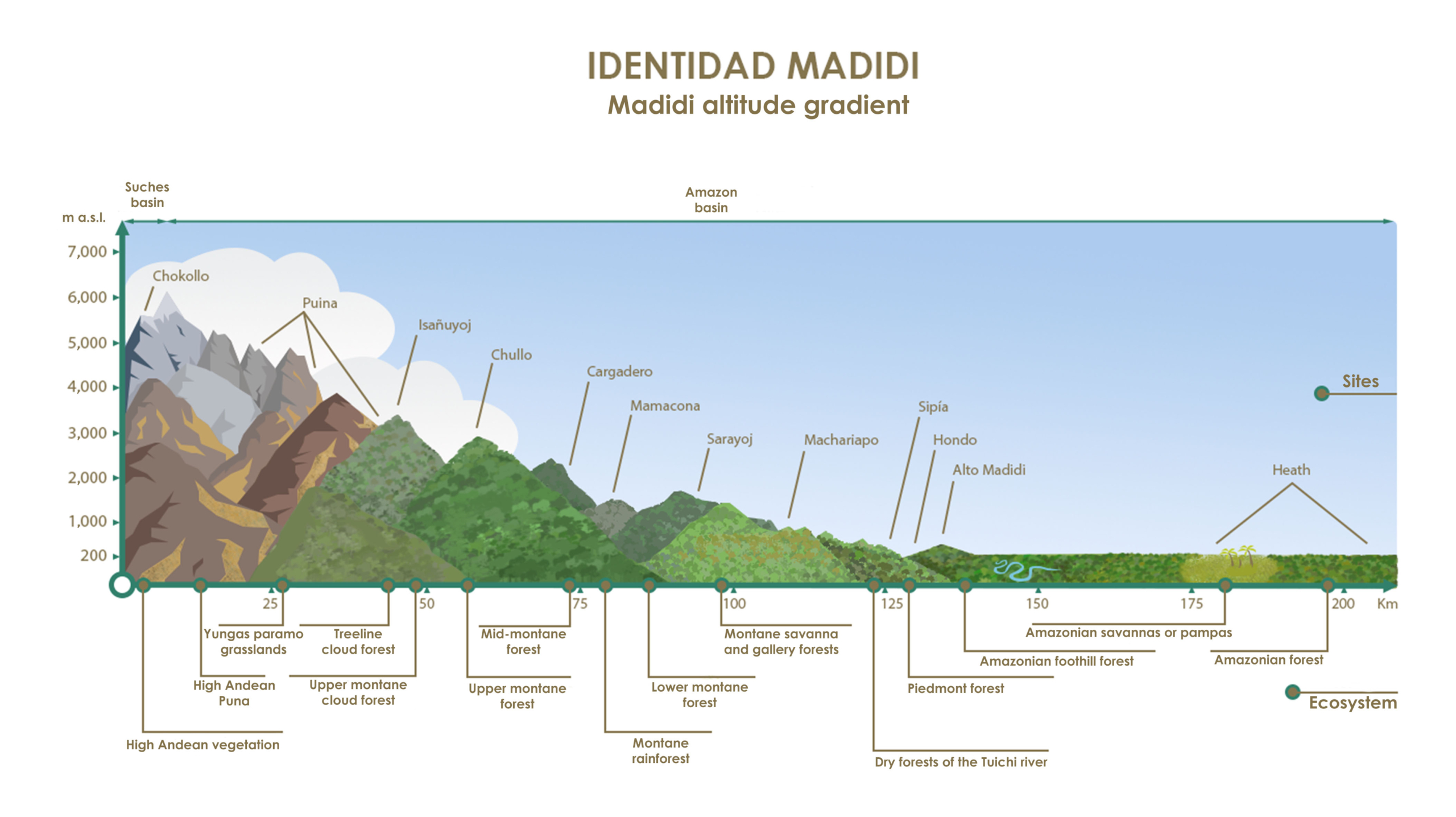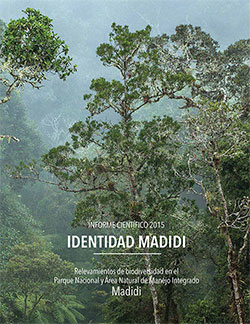Mountain Savannah and gallery forest
(2015)
Montane savanna and gallery forests (Machariapo, 2015) The first study site of the Identidad Madidi scientific expedition took place between June 3rd and 21st, 2015, in the montane savannas and gallery forests of Apolo, between 1,633 and 2,000 m a.s.l. The camp was established on the banks of the Machariapo river at 1,763 m a.s.l., between the communities of San José and Sarayoj. The dominant vegetation in the montane savannas is composed of herbaceous species, mainly grasses (Poaceae, Cyperaceae, Xyridaceae), although these are also interspersed with shrubs and small trees. The gallery forests are distributed in strips that intersect the mountain savanna, and are sheltered in the valleys In total, 296 species of plants, 85 species and subspecies of diurnal butterflies and 210 species of vertebrates were recorded, of which 102 are new species for Madidi, 10 for Bolivia and one for science.
[envira-gallery id=»1990″]
| Title | Categories | Update Date | Download |
|---|---|---|---|
|
Scientific Report 2015 1 548 downloads |
Reports | March 30th, 2021 | Download |
|
Scientific Report 2017 1 375 downloads |
Reports | September 1st, 2021 | Download |
|
Scientific Report 2016 1 333 downloads |
Reports | September 1st, 2021 | Download |
[envira-gallery id=»805″]
[envira-gallery id=»806″]
[envira-gallery id=»826″]




 Facebook
Facebook Instagram
Instagram YouTube
YouTube